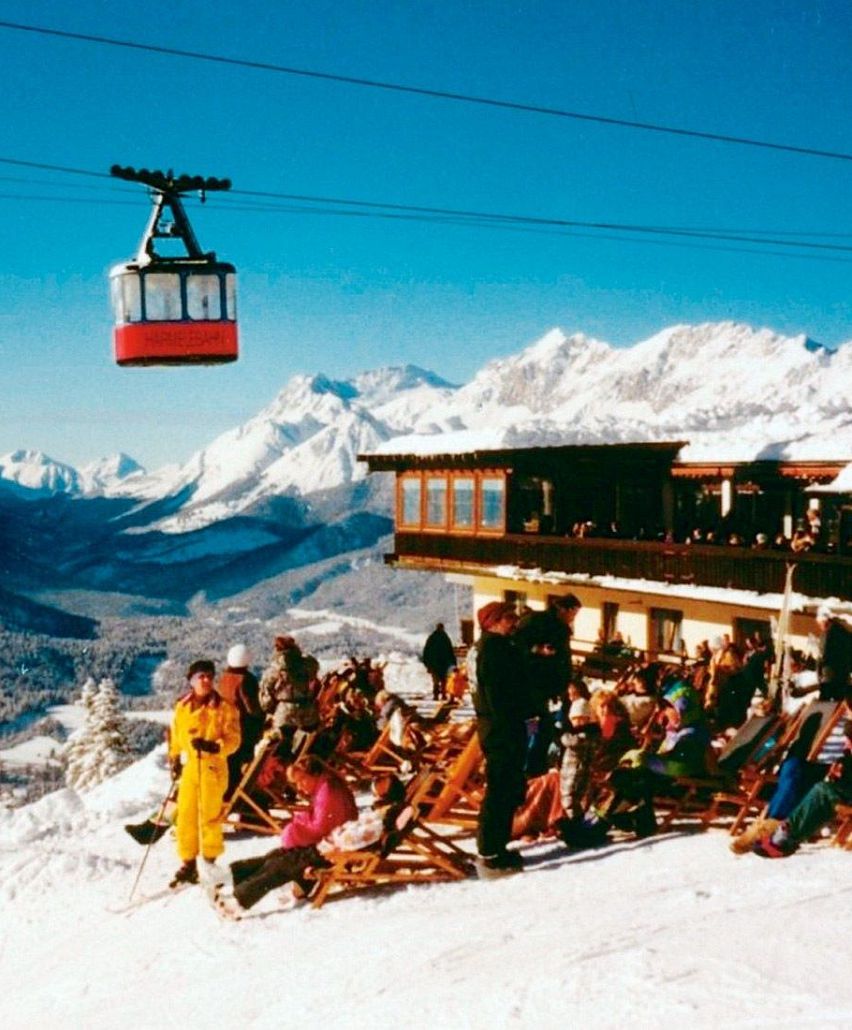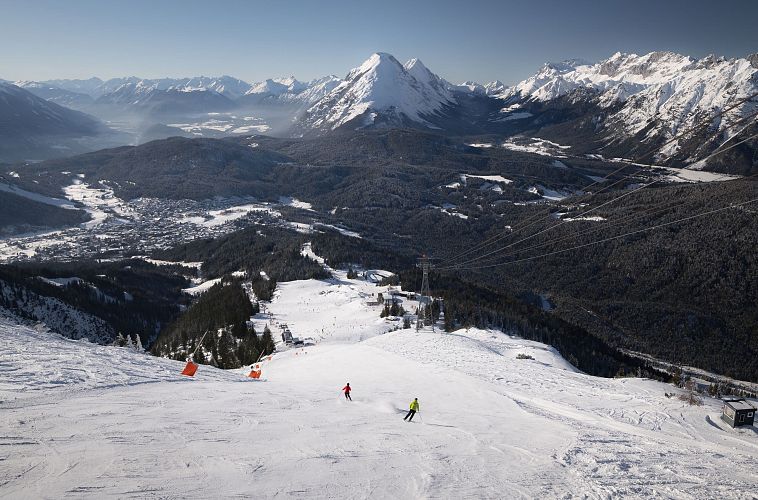
The story of the Rosshütte Seefeld
Walking a tightrope
For many people, the Rosshütte is synonymous with Seefeld and almost everyone in the region has a story to tell about it, because almost everyone in the region has been there! The history is both interesting and exciting when you realise that it all started with a fire.
The name, “Rosshütte“, derives from the word for horse (“Pferd“ in standard German, “Ross“ in Tyrolean German) as it used to be a stable for horses. That is until 1925, when the little “Rosshütte” went up in flames. Not long afterwards, Andrä Tiefenbrunner, known as “Berger Ander“, and his father, Peregrin, began with the rebuild. It took them five years and the new Rosshütte quickly became a popular outing, with Andrä and Peregrin personally in charge until 1954.
Supplies for the hut were transported up to 1,760 metres by – rather fittingly – horses. Andrä used to look through his binoculars around nine o’clock to see how many hikers or skiers were at the train station in Seefeld and then he would estimate how many were likely to make the 500-metre ascent to the hut and armed with that information, he would start his preparations in the kitchen. In winter, there were two 10-litre buckets of “Skiwasser“ (a soft drink), pea soup and Andrä’s famous “Kaiserschmarren“ (pancake-style dish). When a guest once asked him why the Kaiserschmarren was such a beautiful yellow colour, he answered that it was because he only used “chamois eggs”! Everyone wanted to taste this special dish and it became a classic on the menu and nowadays you will hardly find a hut anywhere in Tyrol that does not have Kaiserschmarrn on offer. Thanks in no small part to Andrä.
As the years progressed, the small alm grew into a real mountain business. The sunny location attracted more and more skiers and the funicular made it easy for them to get onto the slopes. After overcoming the post-war hardships, the enthusiastic supporters of tourism in Seefeld proposed developing the Rosshütte mountain lift system. Top of the agenda was a cable car to the Seefelder Joch and they applied for a loan of eight million schillings for the so-called “Hermelkopf-Seefelderjoch Cable Car” project. A lot of money, but still not enough and there were other hurdles to negotiate too before the project could go ahead. Even in those days, there was a lot of red tape for the proponent committee to deal with before the Federal Ministry of Transport and Nationalised Enterprises eventually gave permission on 10th July 1951 for preliminary work to start on the proposed mountain lift network. Unfortunately, as is so often the case with forward-thinking ideas, reality hit when it became clear that there was insufficient financing.
It all worked out in the end however, albeit at great financial and emotional cost, not to mention the building work involved, and there has been a lift facility for 60 years now. The Joch lift was completed in the spring of 1958 and started taking guests up to the top of Seefeld on 26th June of the same year. It was the beginning of a new era for the resort. In 2018, the gondola linking the Rosshütte and the Seefelder Joch at 2,060 metres was dismantled and replaced with a new one. Now, instead of just twelve people, the gondola can carry 25 people, the lift station has been redesigned and the technology brought up-to-date. The cable car is modern in appearance and is recognisable from far and wide.
